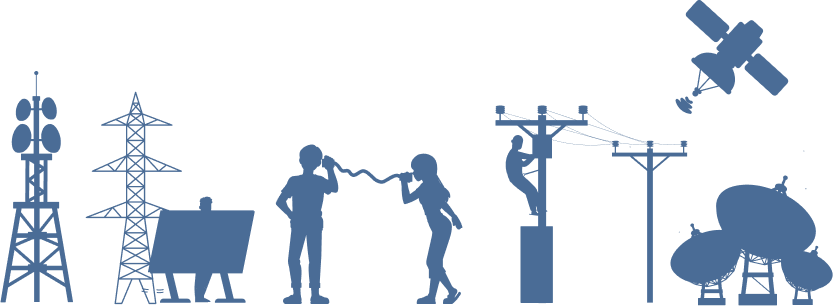Electronics and Communication Engineering Homework Help - TutorBin
| Topics | Benefits |
|---|
| Analog and digital electronics | 100% accuracy |
| Electromagnetic theory | Eminent tutors |
| Control system | Original Work |
| Instrumentation | On-time delivery |
| Communication | Pocket-friendly prices |
Topics We Cover In Our Electronics And Communication Engineering Homework Help!
It is time to examine the subjects that our experts in electronics and communication cover. Our electronics and communication engineering homework helpers are here to help with any homework. In addition, you can ask any queries you may have of our customer service representative.
Instrumentation Engineering: The creation of instruments or devices required for measuring physical properties like pressure and temperature falls under the purview of electronics and communication engineering. Our electronics and communication engineering homework help can provide well-organized content on this subject.
Network analysis: It calculates network components' voltages and currents. Given the subject's significance, many students might find it challenging to provide homework assistance while still meeting university requirements. Using our online electronics engineering homework help, you can write your homework on this topic.
Computer-Aided Engineering Drawing (CADD): All engineering fields, including ECE, require a topic on CADD. Computers develop and distribute engineering drawings of the planned product among the team members.
VLSI: The method of assembling many MOSFETs (Metal-Oxide Semiconductor Field Effect Transistor) onto a single chip to create an IC is known as very large-scale integration (VLSI) (Integrated Circuit). A thorough understanding of this subject can help all ECE students skyrocket their grades. Get in touch with our professionals today to receive the best communication engineering homework help.
Antennas and Propagation: Researchers in ECE entirely use modern technologies when designing antennas and examining space phenomena. Designing and building antennas is a complex task requiring new thoughts and skills. You can opt for our online electronics and communication engineering homework help to get a communication engineering homework solution.
How Our Tutors Solve Your Electronics Homework Questions?
Are you having trouble doing your electronics engineering homework? Ask us to provide you with online electronics engineering homework help. You can hire one of our specialists to write your entire ECE homework. Our electronics and communication engineering tutors follow this process to complete your project.
They first go over each requirement from the client.
They then carry out in-depth investigations and collect information from dependable sources.
They compile, arrange, and validate the data.
Then they construct a framework and put together a rough version.
They check it several times and correct any mistakes.
Our writers then craft the final homework, followed by the reference list.
Finally, they send the content to our editors, who are crucial to providing electronics and communication engineering homework help.
Why haven't you made a decision yet? Purchase a paper immediately from us. We promise that all of our [homework help](https://tutorbin.com/) is accurate. We don't skimp on quality in any way.
How Do Our Tutors Provide You With Communication Engineering Homework Help?
Engineering in electronics is a vast field. Most students have trouble producing perfect homework due to a lack of essential knowledge. Do you also have to deal with this problem? The only way out is to use our communication engineering homework help. Our experts can help you understand this subject's subfields, including telecommunication, instrumentation, power, and control.
Our knowledgeable specialists can assist you in comprehending all the essential elements so that you may produce outstanding homework. It covers various topics, including optical communication, coding theory, digital image processing, and analog circuits.
Our experts can instruct you on circuit theory by showing you how current sources, voltage sources, and resistors relate to one another. They can provide you with sample drawings of the transformer to better comprehend its construction. They can even teach you how to develop digital and power electronics designs. Therefore, our communication engineering homework solution is crucial right now.
Benefits Of Our Online Electronics And Communication Engineering Homework Help!
Let's examine why to get your communication engineering homework solution from TutorBin. TutorBin has a team with years of experience producing excellent electronics and communication homework.
Our tutors who teach communication and technology follow the directions when they help you with your homework.
Poor performance results from Original work. Because of this, our electronics and communication teacher produces original material to aid your academic success.
Our customer support staff is accessible at all times to respond to your questions and take care of your communication and electronics-related needs.
Specialists in electronics and communication possess both theoretical understanding and practical abilities.
A solid grasp of logic is necessary because electronics and communication are logical subjects. We provide more individualized and problem-solving services to aid in your conceptual understanding.
Our electronics and communication professional responds promptly and accurately when you need assistance.
Learning about electronics and communication is intriguing. We have some knowledgeable people that can clearly and sufficiently explain any electronics and communication topic so that you may study effectively with us.
How Do You Seek Communication Engineering Homework Help From TutorBin?
You can effortlessly get homework help in electronics communication engineering from TutorBin. You must follow our straightforward approach to fulfill your "Who can do my electronics and communication homework solutions" request.
To seek help with electronics and communication homework at TutorBin, you must register at our sign-up page.
You must supply information about your electronics and communication homework requirements. Please type your question or upload its picture along with question files, reference material, and guidelines to follow.
Pick a deadline for your electronics and communication homework and submit it to us.
Depending on the complexity and deadline, you will get a price quotation from us shortly after order placement. Once you make the payment, it's time to choose the best electronics tutor for your homework.
Our electronics and communication specialist will start working on the project after obtaining the information, adhering to the university guidelines and any customizations you have provided.
When we finish it, we send it to editors, publishers, and proofreaders for review and tweaking.
Following that, you can download electronics and communication homework answers from your profile.
Instant And Flawless Communication Engineering Homework Solution From TutorBin!
TutorBin's online electronics and communication homework help are available to students worldwide 24 hours a day, seven days a week, with a short turnaround time. TutorBin only hires skilled and experienced electronics and communication tutors. Our electronics and communication homework help professionals craft their homework after conducting an in-depth analysis of the subject. At the same time, we appropriately reference each work that includes in-text citations. TutorBin's electronics and communication homework help online is 100 percent guaranteed to be of high quality and provide Original work for the benefit of students. As a result, we are the most dependable homework help electronics and communication service.
You can also seek electronics and communication homework help for advanced learning. We provide one-to-one assistance for a better understanding of students. TutorBin's electronics and communication tutors are experts who take a student-friendly approach to impart knowledge at reasonable rates.
Why then are you holding out? Be quick! The moment is here to enlist our assistance and improve your grades.
Cheers!
Most Popular FAQs Searched By Students
What is the electronics and communication engineering homework help?
Our electronics and communication engineering homework help serve you in the following ways:
Our tutors solve your homework for you if you lack the time.
They enhance the quality of your content through editing and proofreading.
TutorBin subject matter specialists come to your rescue when you don't know how to undertake comprehensive research.
Specialists in electronics and communication possess both theoretical understanding and practical abilities.
What are the benefits offered by our communication engineering homework help?
Our communication engineering homework help offers you the following perks:
Zero computational and technical errors.
Informative solutions that work as study material
Original Work
The assistance of eminent tutors
Interactive and personalized video solutions
On-time delivery
Free unlimited revisions
Pocket-friendly prices
Secured account
Attractive discounts and offers
How do your electronics and communication engineering tutors solve homework?
To ensure that your homework is accurate and original, our electronics and communication engineering tutors follow these strategies:
They go over the prerequisites to satisfy every element of the project.
Our tutors do extensive research to ensure the answer is accurate and informative.
They perform several manual checks to assure accuracy.
Do you provide anonymous online electronics and communication engineering homework help?
Our online service for helping students with their electronics and communication engineering homework is 100% private. Since protecting our customers' privacy is of the utmost importance, we never divulge any information about our clients to outside parties.
Can any service provide homework help in electronics communication engineering fast and flawlessly
It's time to speak with one of our trustworthy tutors if you need prompt and practical assistance with your electronics communication engineering homework. Our professionals always give you correct and timely solutions, ensuring you never miss submission deadlines.
Does TutorBin provide a communication engineering homework solution for free?
We work with highly qualified and eminent professionals. We do not offer a free communication engineering homework solution since we compensate employees for their time and work. But students can afford our pocket-friendly price.
How do I get the best online electronics engineering homework help?
If you want to get the best online electronics engineering homework help, you can follow these simple steps:
Contact TutorBin.
Please specify whether you require the electronics and communication homework help, video solutions, or live teaching.
Create an account for free and post your question: "Can you do my electronics and communication homework solutions?" Please feel free to contact us at 7082686818 or tutors@tutorbin.com for help.
Make payment and choose an experienced electronics and communication homework tutor.
You're ready to seek the assistance of an electronics and communication homework expert.









